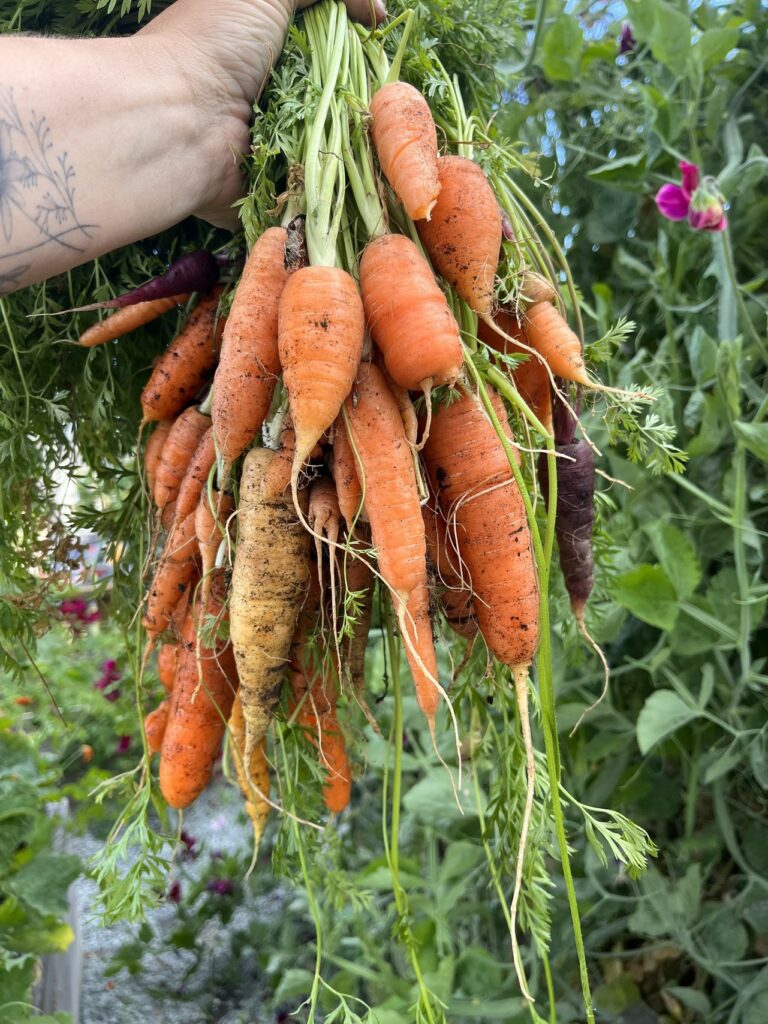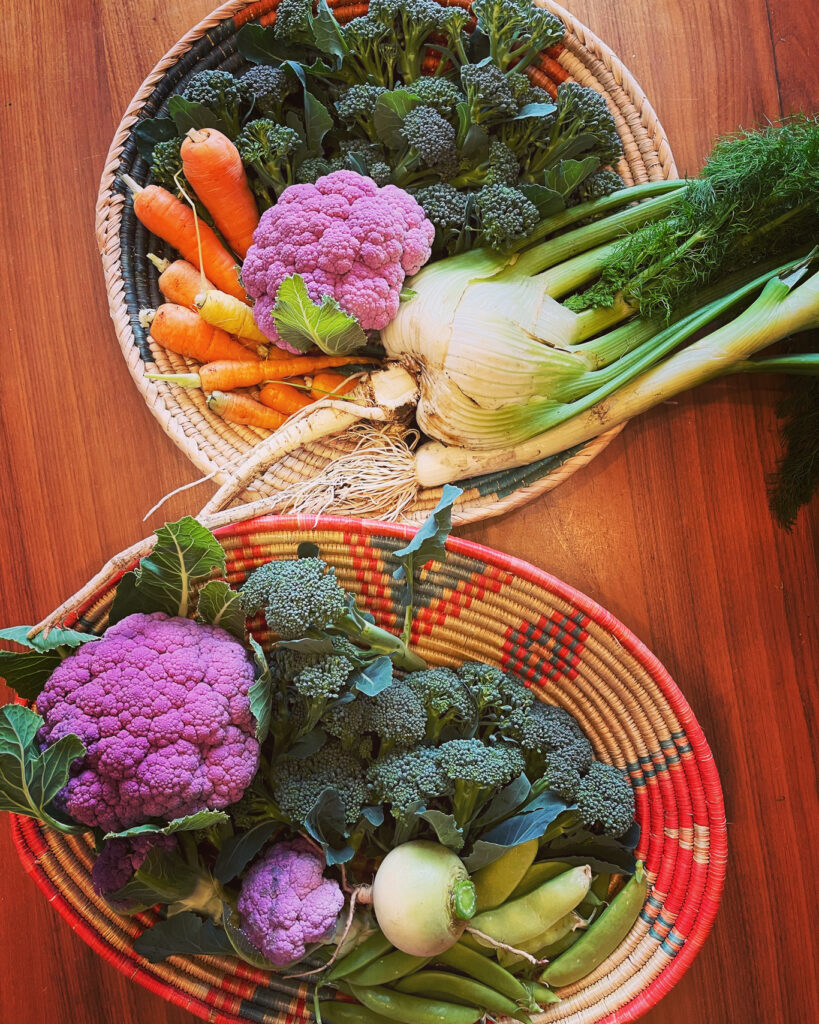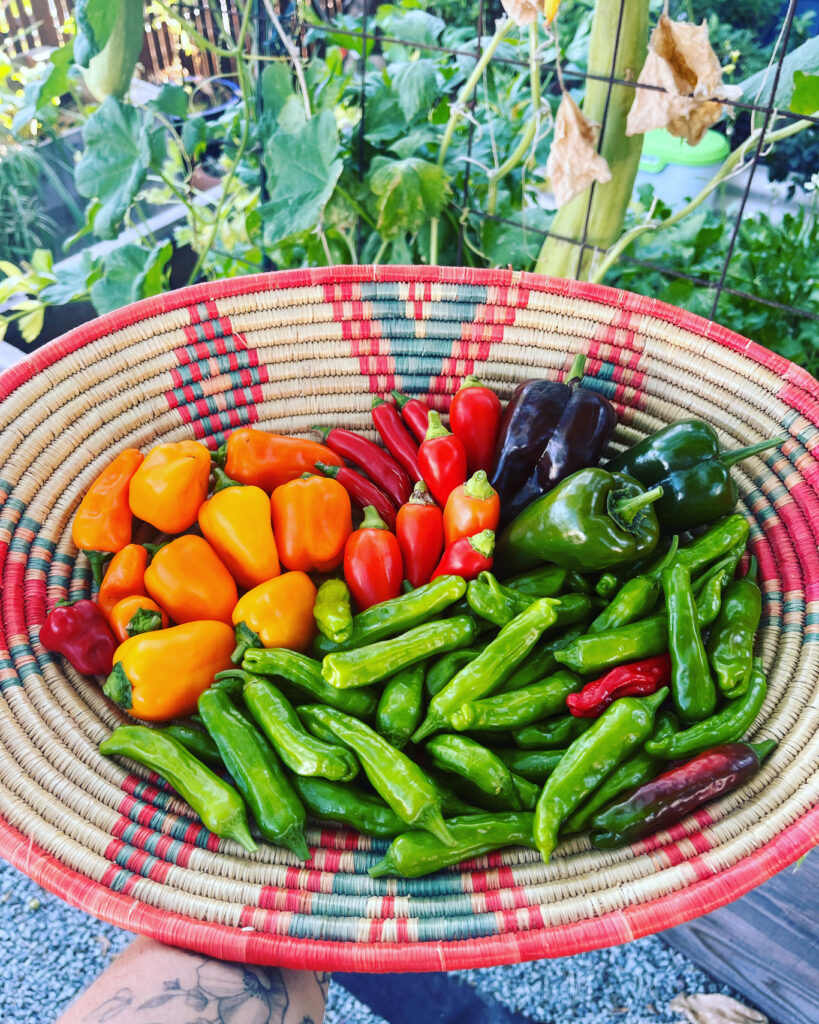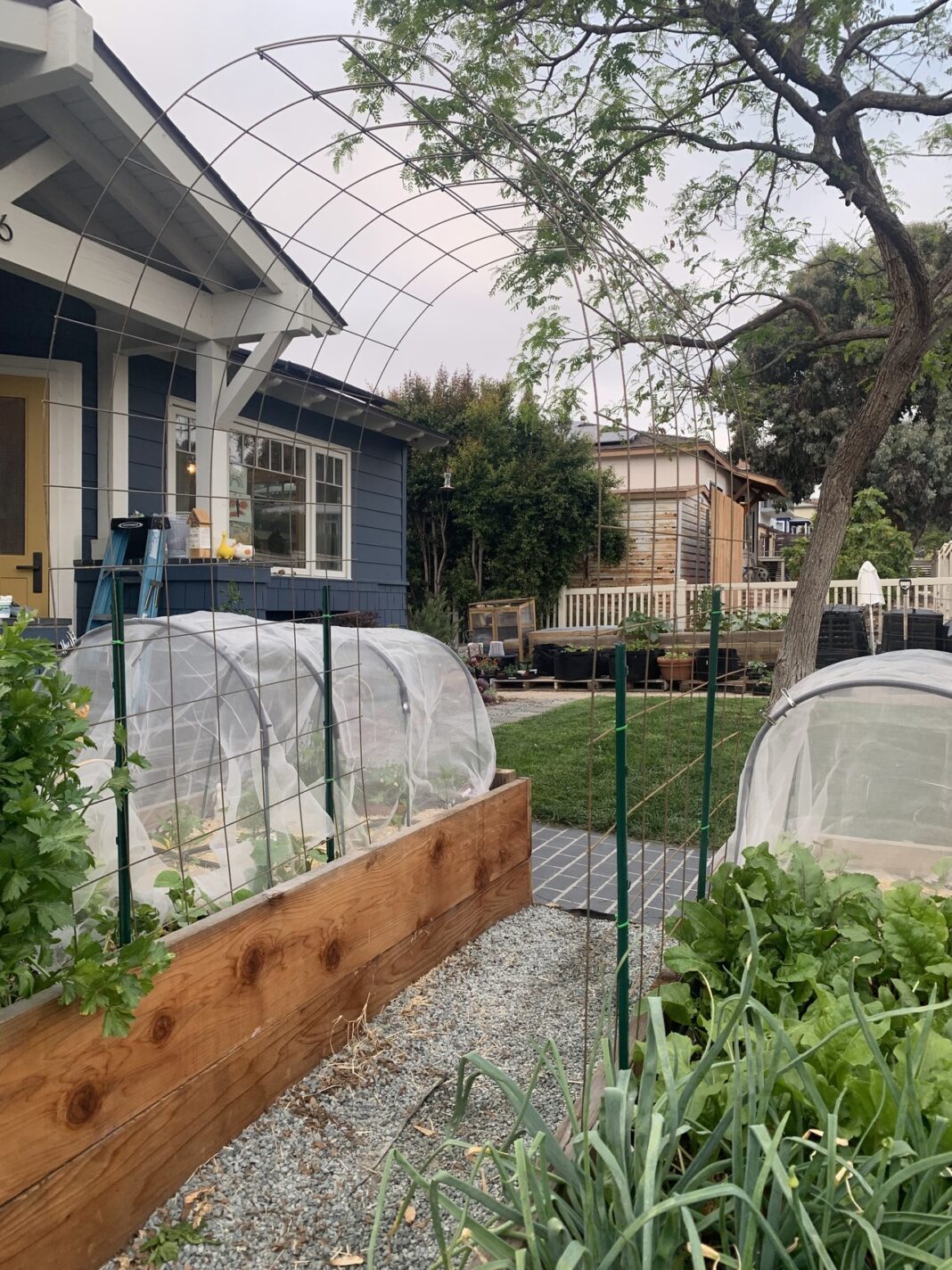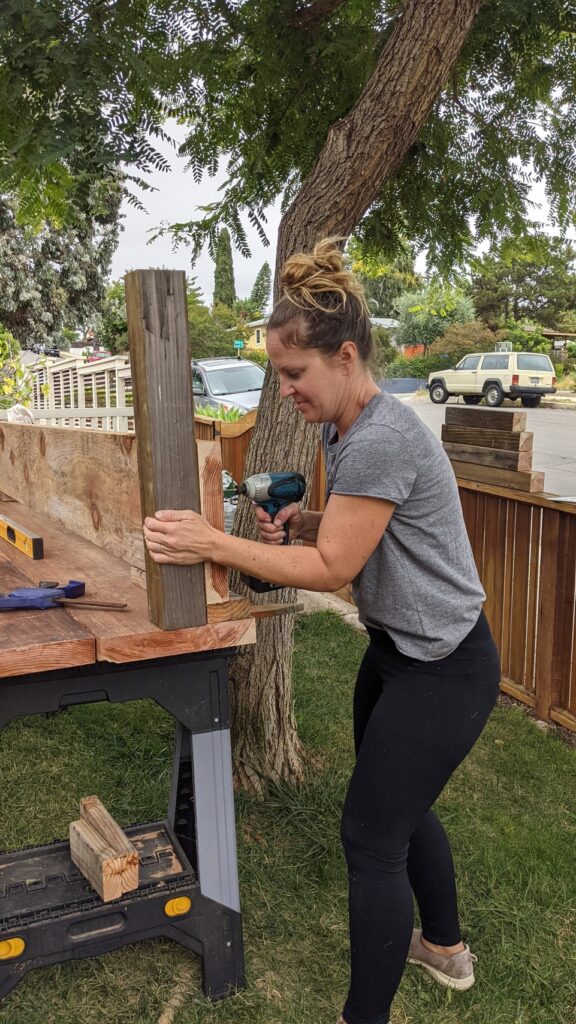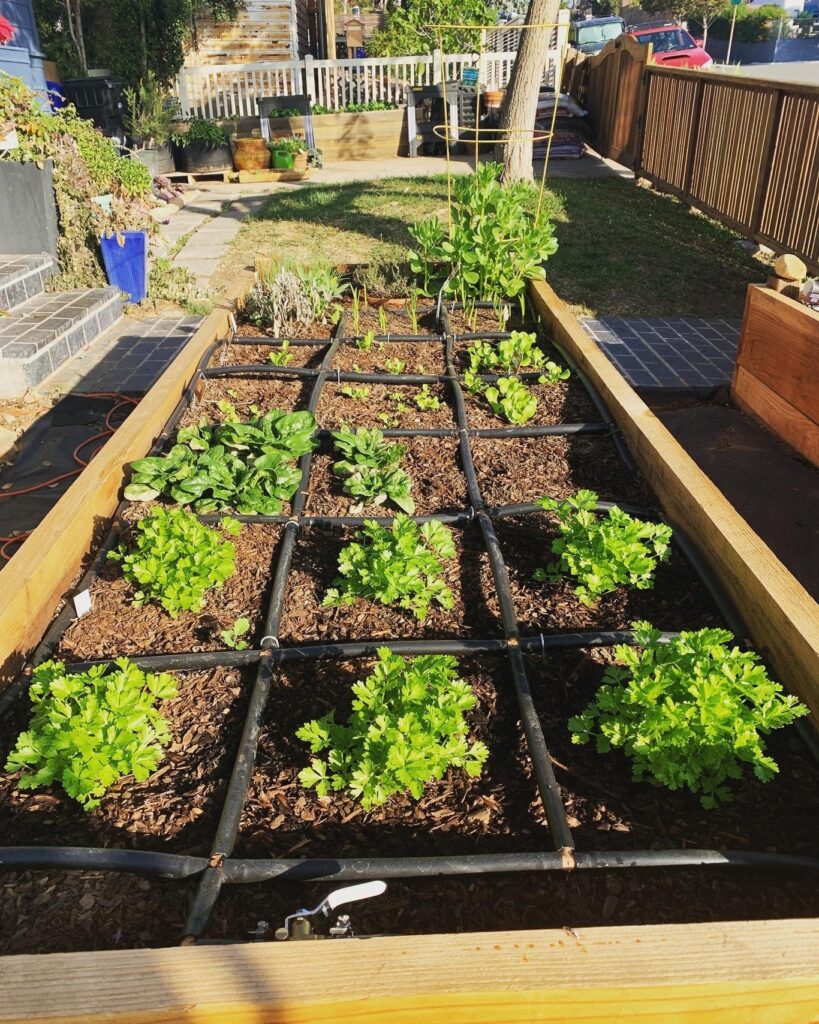Say goodbye to your lawn and hello to fresh food and connection.
Two years ago, I decided our front yard was no longer serving a purpose. It was time for a change. Time to reimagine how we used the space and how we wanted it to connect to our neighborhood and the larger ecosystem. We said goodbye to our grass and hello to four raised beds, roses, and a stone fruit tree.
We also transformed our driveway into additional garden space with both permanent and moveable raised beds and our compost bins. Anywhere I could squeeze a pot or raised bed I did, except for a small patch of grass under a large shade tree. My ultimate goal is to have a front yard that feeds us and the pollinators while inspiring neighbors.
Today our front yard is a Monarch Waystation, with native milkweed, wildflowers, dahlias, and vegetables growing year-round. The space has found its purpose to grow, feed, and provide connection. It’s magical if you ask me.
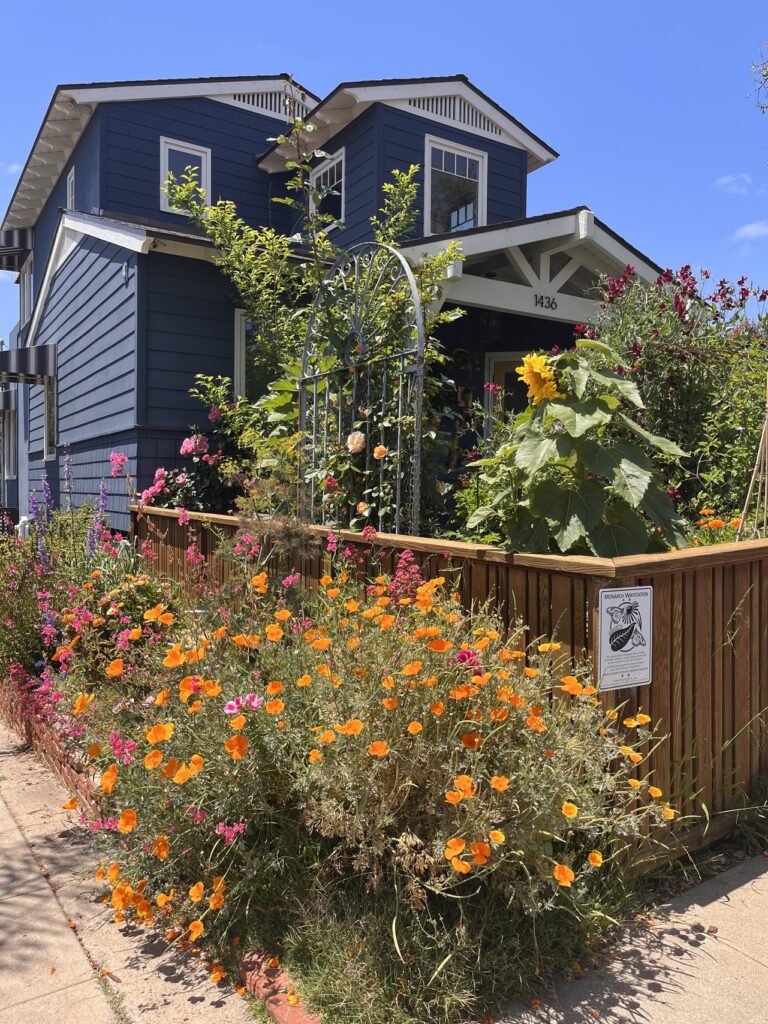
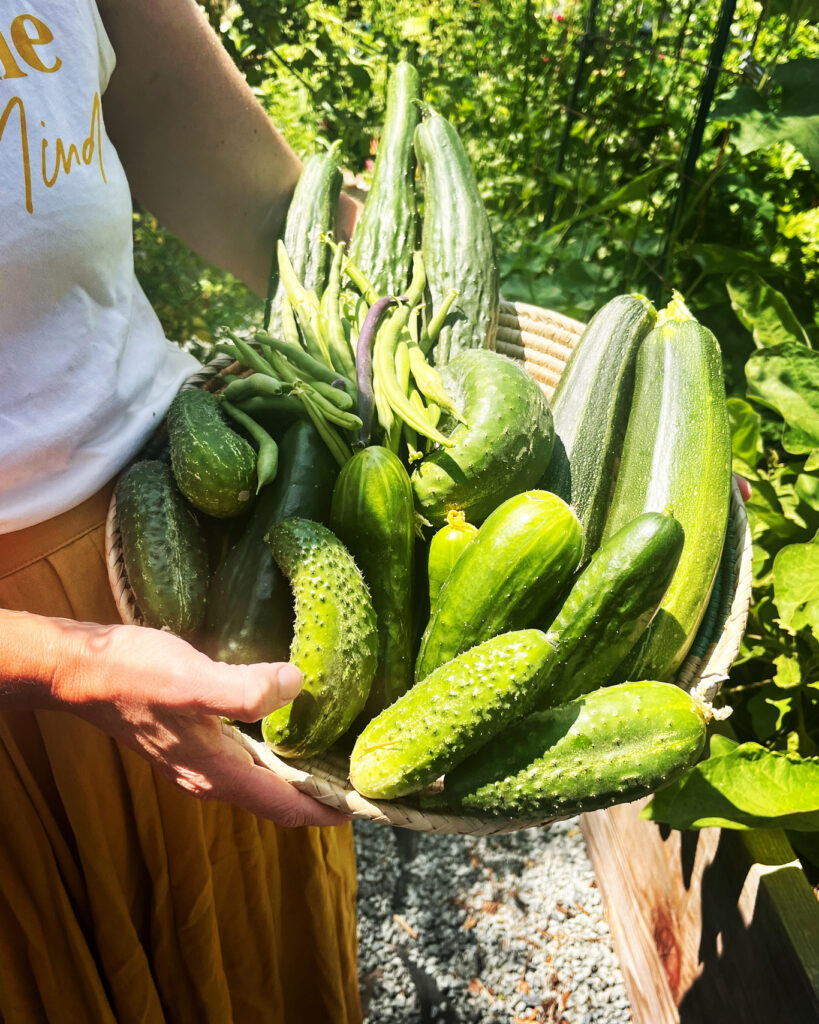
What’s so magical about front yard veggies?
Connection. A front yard edible garden connects your green space to the larger ecosystem and provides a home to wildlife. Lawns lack shelter, food, and water for insects and birds. They simply cannot support diverse wildlife, and if pesticides are used to keep our lawns in perfect condition, they likely support zero wildlife. On the flip side, our front yard garden provides a continuous food supply for our family and neighbors while creating a refuge for pollinators, especially monarchs and swallowtail butterflies.
My children help with garden chores, maintain their fairy gardens, and have learned about composting and earthworms, all while butterflies, bees, and ladybugs fly above their heads. It is magical. Typical American culture has shifted our time and energy away from the front yard, disconnecting us from our neighbors and into the privacy of our backyards. Working in the front yard has allowed me to meet neighbors I never would have met. We share gardening tips and frustrations while I hand out flowers, herbs, or veggies to those who walk by. Connection on all levels, in all ways. That is the magic of a front yard garden.
Beyond connection, the front yard sometimes just makes sense. It is often closer to the kitchen, making a garden run for a missing dinner ingredient quick and easy. For some the front yard provides space, better sun, or easier access. Plus, vegetables are beautiful! People can shy away from the front yard edible garden due to its lack of perfection, fear that it doesn’t present well, that it’s messy and unkempt, but what if we embraced the imperfection? A garden is a living and evolving space. There will always be something just starting, in its prime, and dying and that is the beauty of it all. Are you ready to embrace it and find purpose for your tired lawn?
Transforming your front lawn into an edible garden takes planning and time, but with a few tips, the process doesn’t have to be daunting.
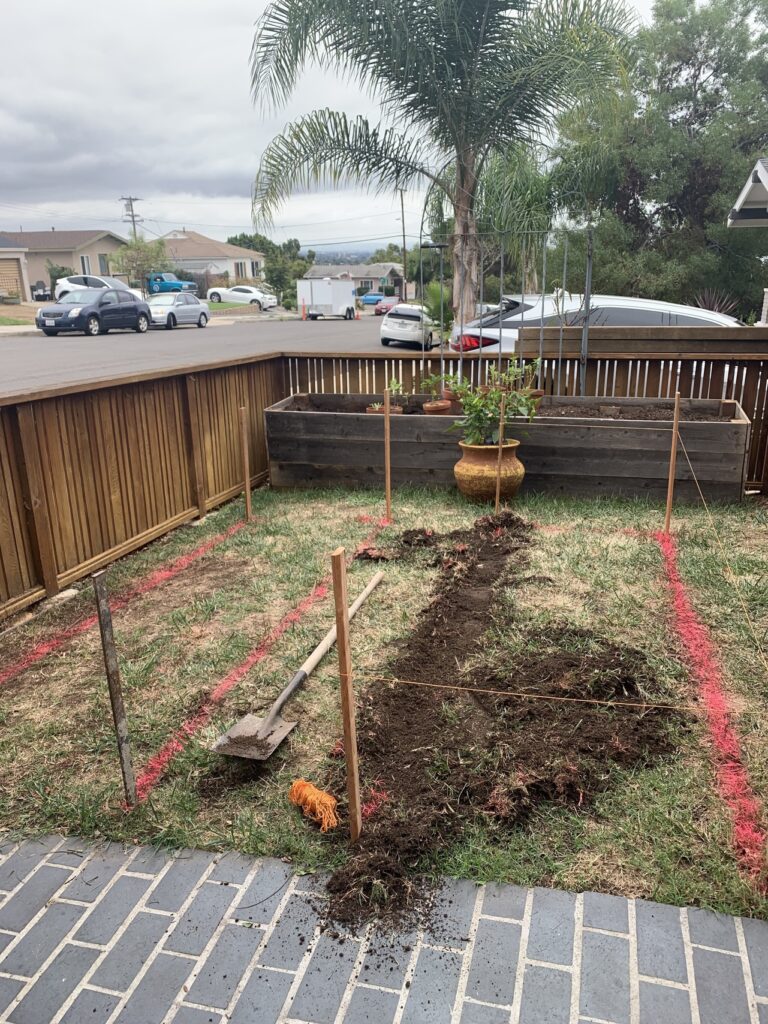
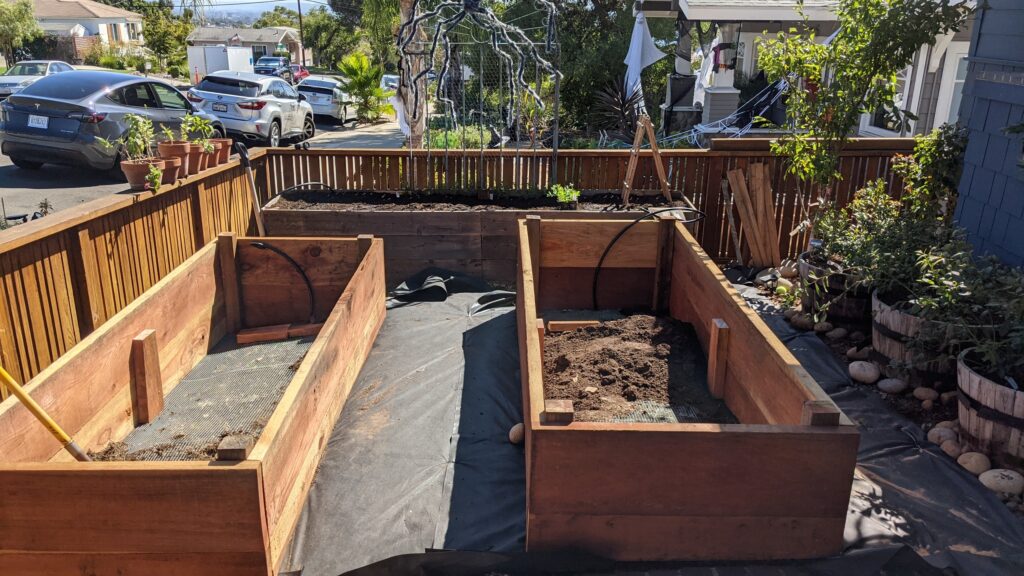
Steps to creating a front yard edible garden:
1. Figure out your purpose.
Do you want to grow flowers, natives, or food? What do you want your space to feel like, and how do you want to connect with it? Walk your neighborhood for inspiration, read, and connect with other urban gardeners on social media or through your local garden club. Spend time in your space thinking, imagining, and planning before picking up a tool or buying a plant.
2. Plan and design.
Draw out your design and mark it out physically. Leave space for the evolution of the garden as your inspiration, creativity, and purpose shift with time and each season. The design process is where you dream. Set your wishlist and work backward as you map out the space and figure out what works and doesn’t.
3. Remove your grass.
There are a million tutorials online about grass removal, all with their pros/cons. Determining how you will use your space and taking inventory of the current type of grass or weeds you have will help you decide the best method. The three main options are to manually remove with a shovel or a sod cutter (easy to rent at any home improvement store), solarize it (cover with clear plastic for four to eight weeks and allow the heat to kill the grass), or cover it with weed barrier landscape fabric or cardboard. In our yard, we did a combination. We stopped watering, weed whacked to the dirt and then covered with landscape fabric. Under our raised beds, we did an additional barrier using cardboard, which will naturally break down and add brown matter back into the soil. Our raised beds are over two feet tall, but if your beds are only a foot deep, covering the grass will probably not be sufficient, and you will likely get grass growing up into your beds.
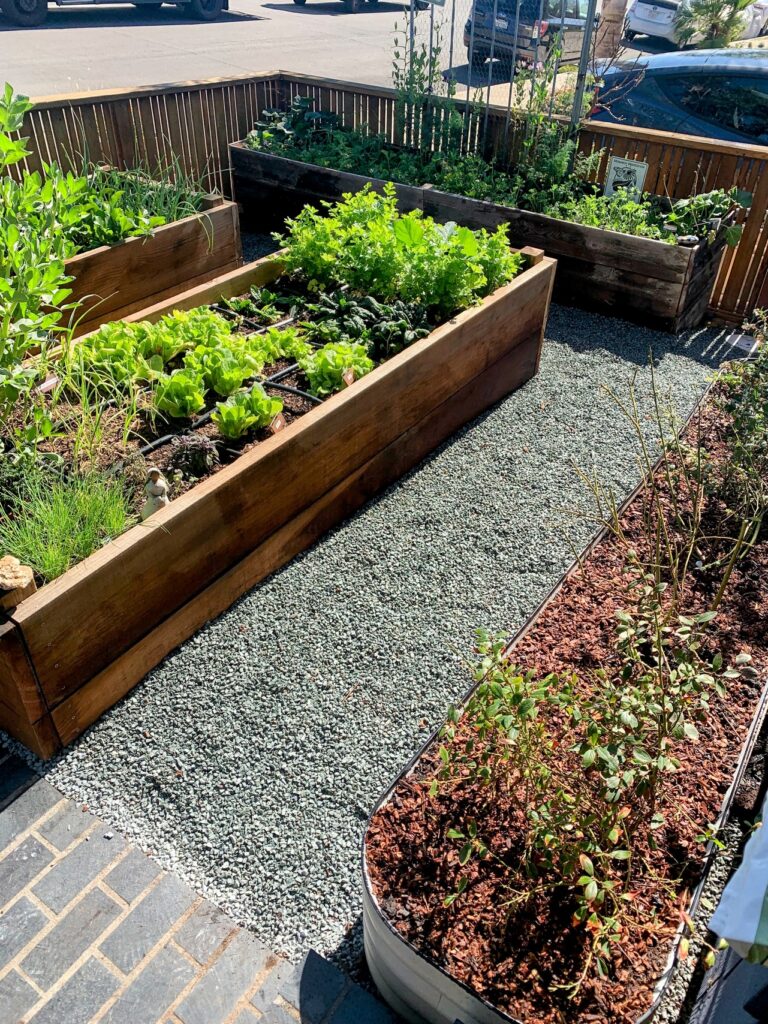
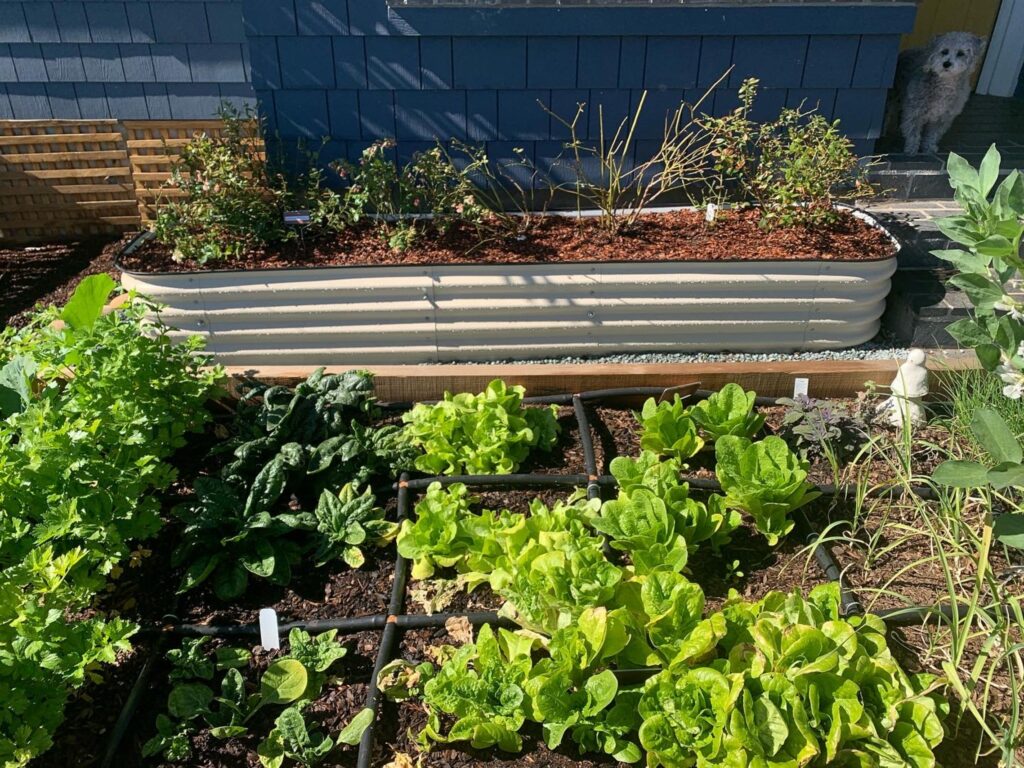
4. Build your raised beds.
We use a combination of wood beds we built out of redwood, metal beds, and pots/grow bags. Reuse old cedar fence boards or repurpose items to use as planters. Get creative and resourceful. How environmentally friendly, right?!
5. Figure out irrigation.
Determine and plan for how to water your space. Our garden utilizes drip irrigation hooked up to our old sprinkler system, ollas (an ancestral watering practice that uses clay pots), and hand watering. There will always be value in hand watering. It provides a time for you to connect to your garden and do visual checks. For more ideas, see our article on Ten Gardening Tips to Conserve Water.
6. Start planting.
Finally, it’s time to plant! #1: Grow for your gardening zone and season. Find your favorite local nursery and make connections. Most have free gardening classes, and the employees are experts and always willing to answer questions. You’ll also find in-season veggie options. The first year or two will be about experimenting and failing as you learn what thrives in your space, understand your sun exposure and watering needs, and work to build soil health. Embrace the hotmessness of it all! Failure is the most important tool in the garden. It allows us to understand what works and doesn’t, what changes to make, and where we want to focus our energy. Think of the whole process as magical.
